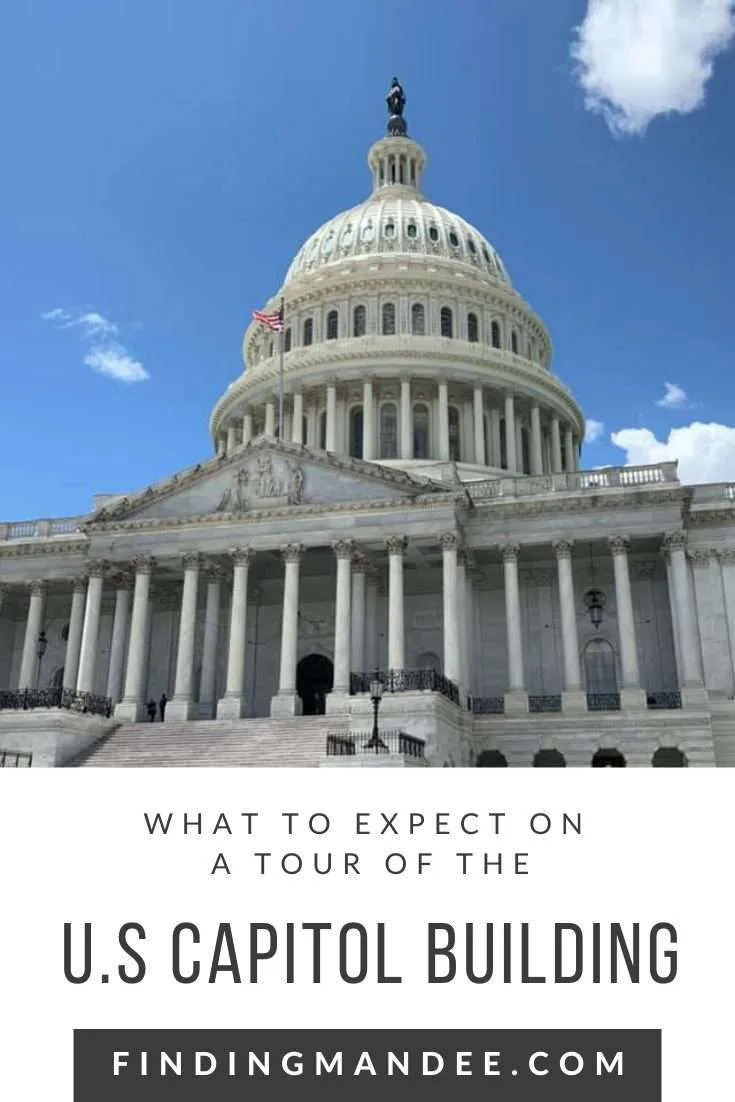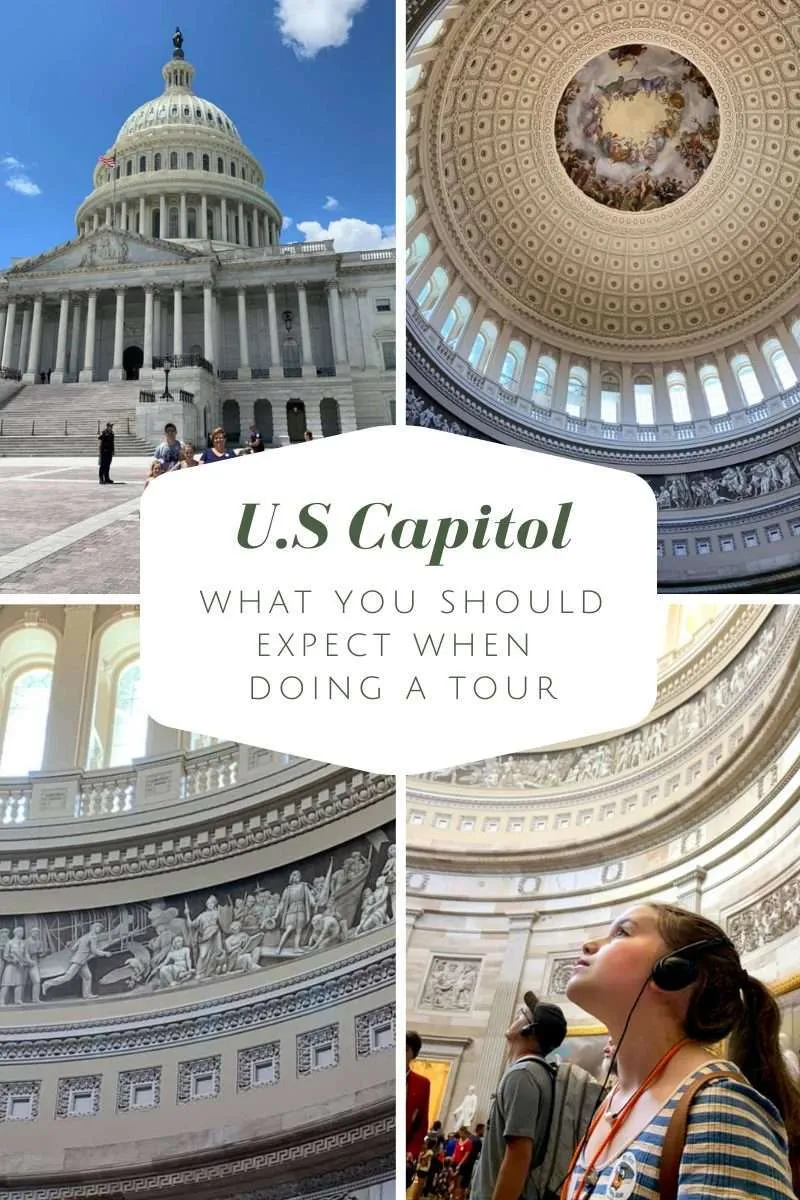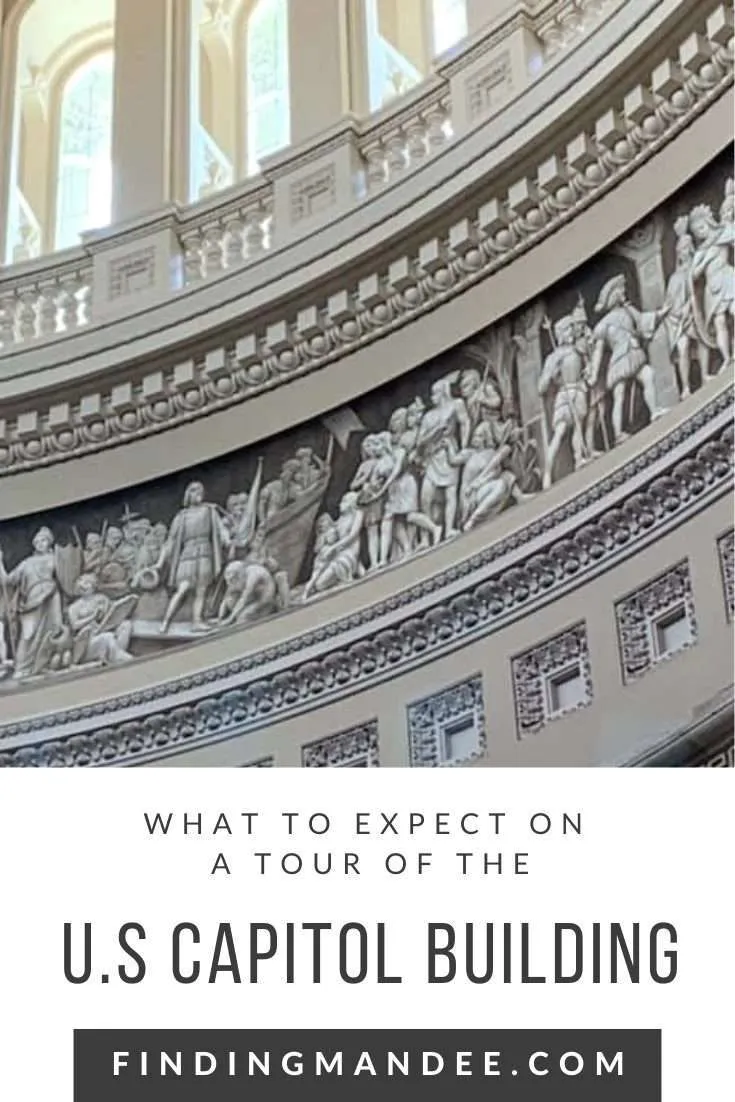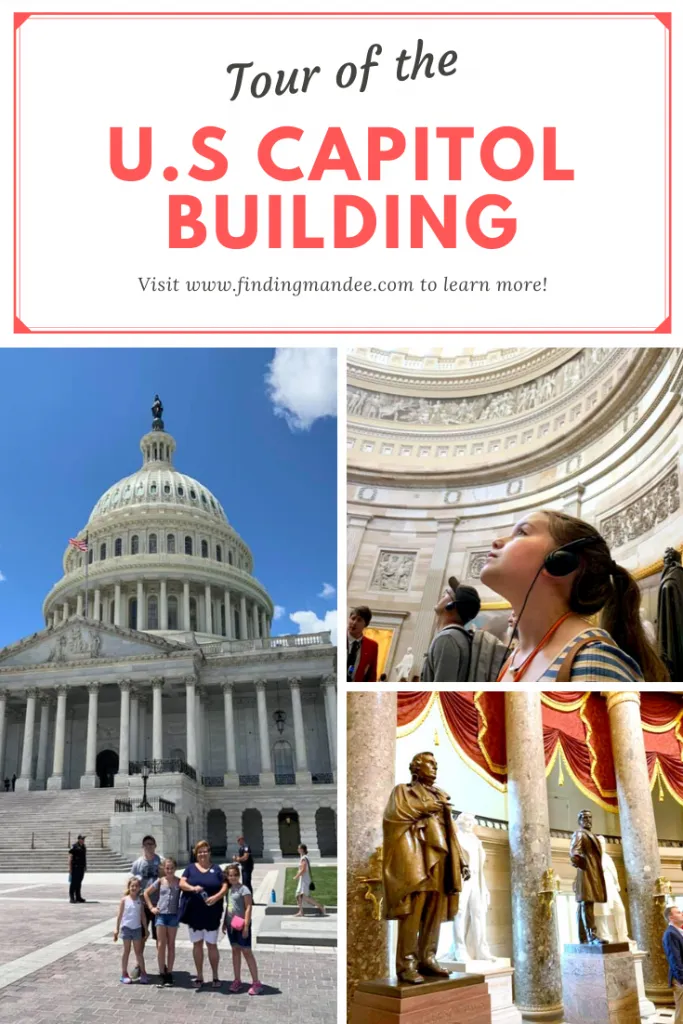[Disclaimer: Finding Mandee is reader-supported, if you purchase through links on my site I may earn an affiliate commission at no additional cost to you. As an Amazon Associate, I earn from qualifying purchases.]
I’ve written so much about our family trips to Washington D.C. that you’re probably sick of it.
But I just can’t help myself! Visiting our nation’s capital was such a roller coaster ride. One of our trips went horribly wrong, but after a lot of careful planning, the next one went MUCH better!
Our tour of the United States Capitol Building was during the ‘good trip’, thankfully. I was a little nervous about doing this tour with all 3 kids, but they didn’t mind at all. I won’t lie and tell you that they loved it, but there were parts that they did like.
Here’s what you can expect when taking a tour of the U.S. Capitol Building!
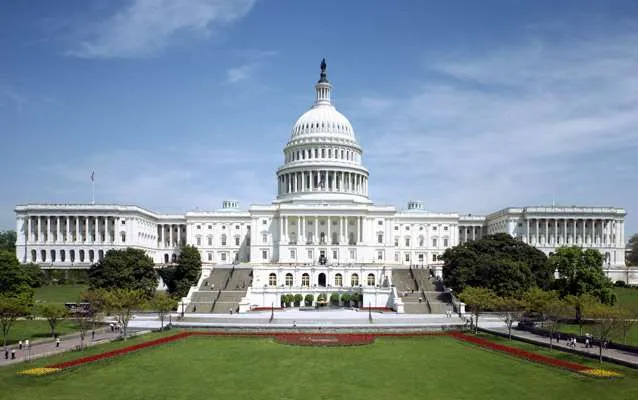
What is the U.S Capitol Building?
The United States Capitol is home to the U.S. Congress and seat of the legislative branch of the federal government. Located at one end of the National Mall, this building has a long history as one of the most important buildings in Washington.
In addition to housing Congress, the Capitol Building is a museum of American art and history. It is open for tours from 8:50 am to 3:20 pm 6 days a week (Monday – Saturday).
The tours are absolutely FREE, but they require a pass. We reserved our passes online before our trip.

What to Expect
We arrived 30 minutes early for our tour. You will have to go through metal detectors and have your bags searched before entering the building.
Absolutely NO food or drinks are allowed inside the building. Even our unopened snacks and water bottles stowed in the backpack were thrown away. (So much for saving money…)
Visitor Center
We picked up our wristbands at the Visitor Center, using the e-mail they sent after we made reservations. Then we had a few minutes to look around the Visitor Center while we waited for our tour to begin.
There are several interesting pieces of art, but the real show stopper is the bust of the tallest statue in Washington D.C., the Statue of Freedom.
At 19.5 feet and 15,000 pounds, the Statue of Freedom graces the top of the Capitol Building. The bust in the Visitor Center gives visitors an up-close view of the statue that would never be possible from the ground.

Theater
When our tour was ready to begin, we got in line for the theater. The beginning of the tour starts with a short movie about the history and purpose of the Capitol.
Meeting Your Tour Guide
After the movie, we exited the theater with the crowd, which split into different groups. (Our family was able to stay together, but very large groups may have to separate.) We met our tour guide, who introduced himself and passed out headphones and audio players.

It’s not a pre-recorded tour. The headphones are wirelessly connected to the guide’s microphone. It made it much easier to hear what he was saying as the crowds can be quite large and loud.
After making sure everyone’s equipment was working and telling us the rules, the guide led us to the rotunda.
Rotunda
The U.S. Capitol Rotunda is a huge domed room on the second floor of the building. It is decked out with some of the most iconic pieces of American art ever made.
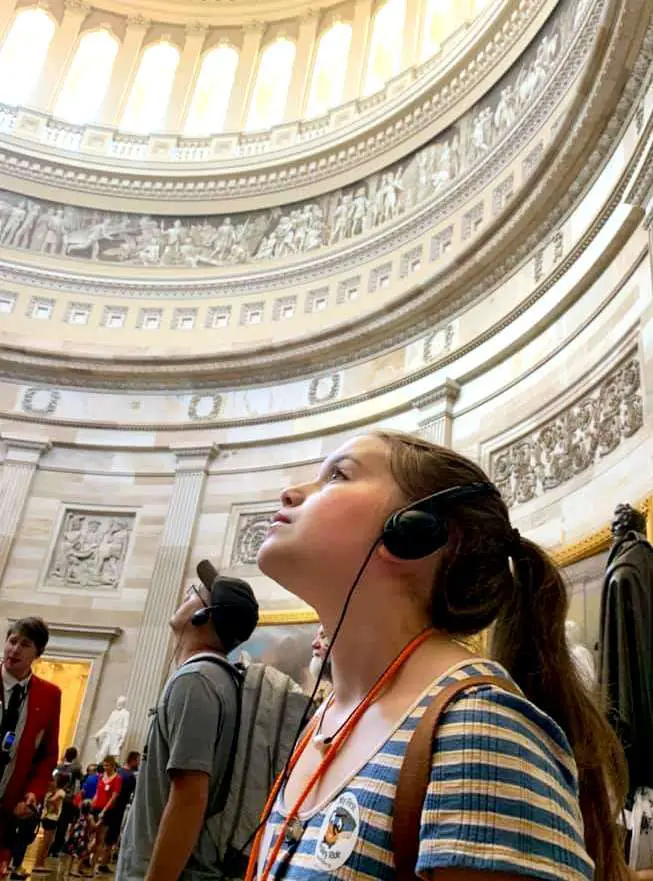
The Rotunda canopy features the Apotheosis of Washington, which depicts George Washington sitting in heaven after becoming a god, surrounded by figures from classical mythology. The painting is enormous, covering an area of 4,664 square feet. The figures in the painting are up to 15 feet tall, to make them visible from the floor below.
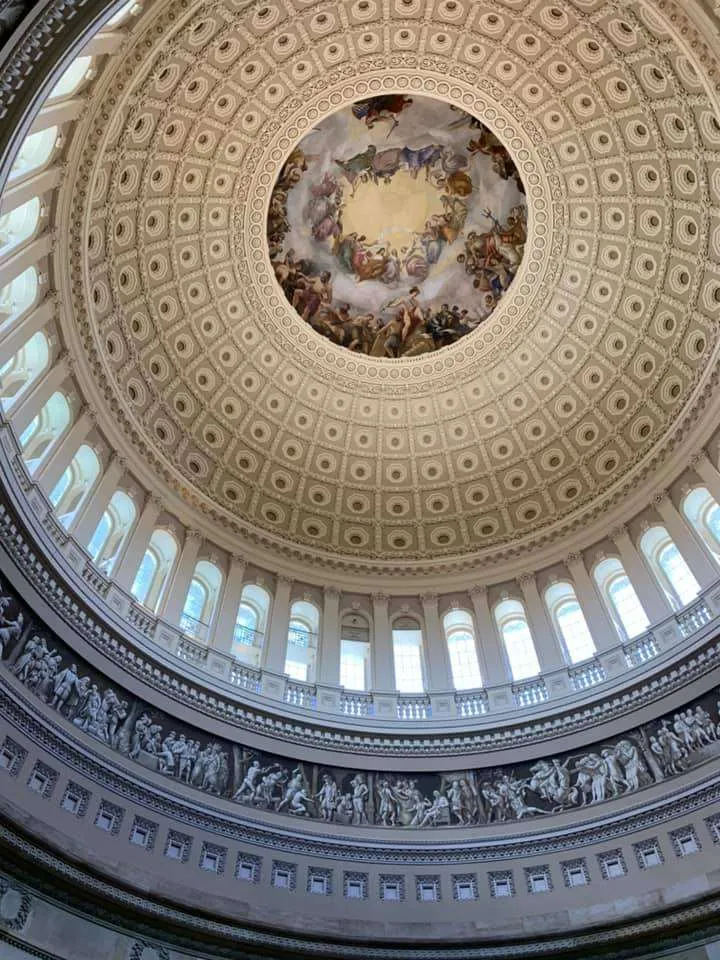
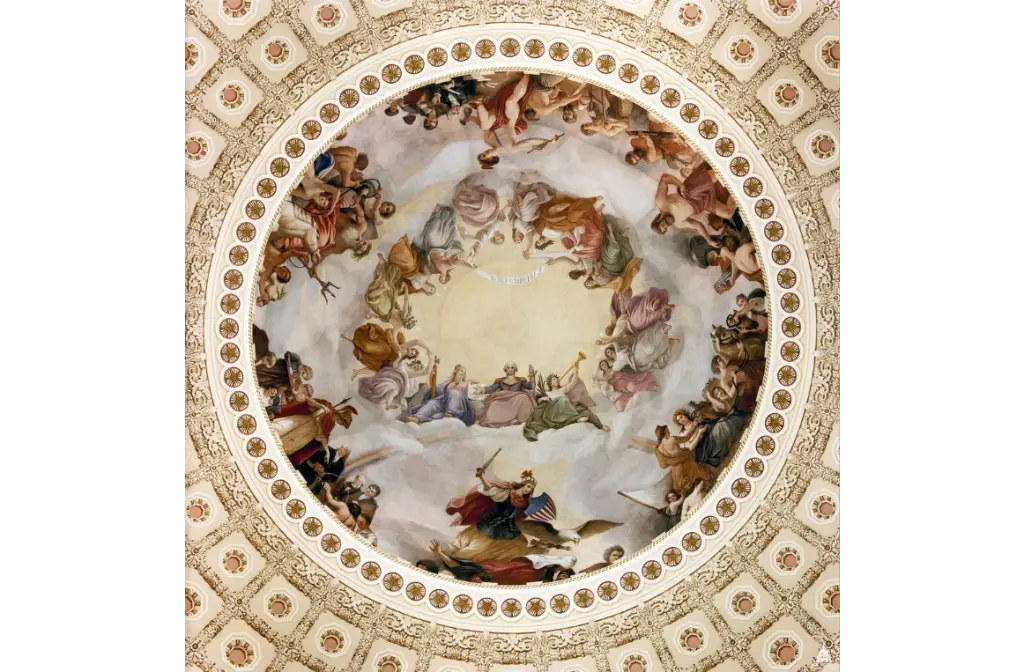
Below the Apotheosis of Washington are 36 windows, below them is the Frieze of American History. This frescoed band was painted to look like carved stone. It depicts 19 scenes from American history, such as the landing of Christopher Columbus and the Battle of Lexington.
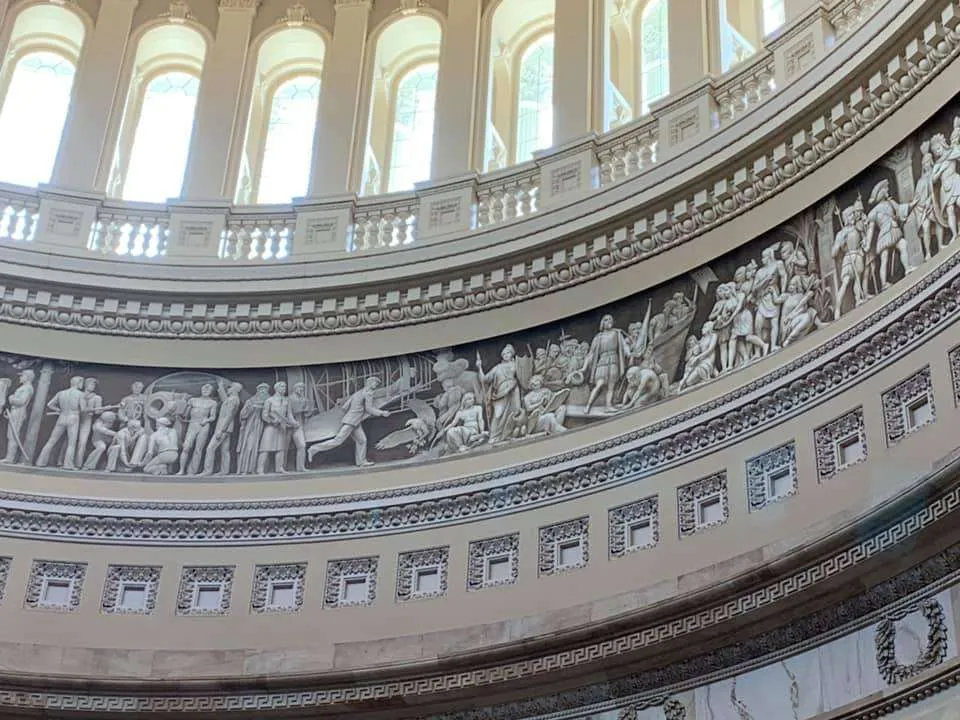
Closer to eye level are 8 niches that hold framed historical paintings.
Measuring 12 by 18 feet, these oil on canvas paintings have hung in the Rotunda since the 1800s. These paintings also depict scenes from American history, including The Surrender of Lord Cornwallis and The Baptism of Pocahontas.
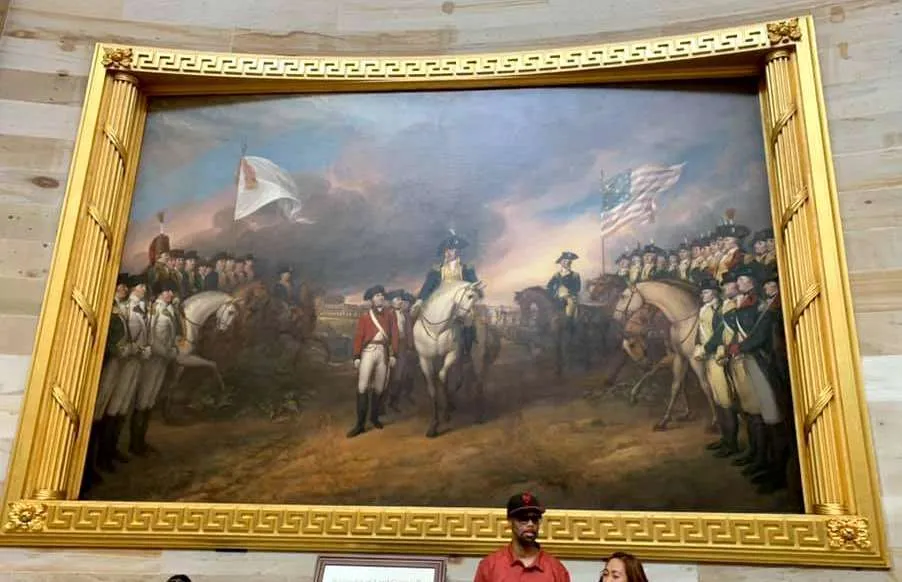
In addition to all of the paintings, there are 11 statues in the Rotunda.
The Rotunda is used for ceremonial events, such as the dedication of works of art. However, its most notable use is for the Lying in State of distinguished citizens. This ceremony is a rare honor that occurs after the death of a member of government. Only 32 people (12 of whom were presidents) have had this honor in the United States. The body of the official is placed in the Rotunda to allow the public to pay their respects.
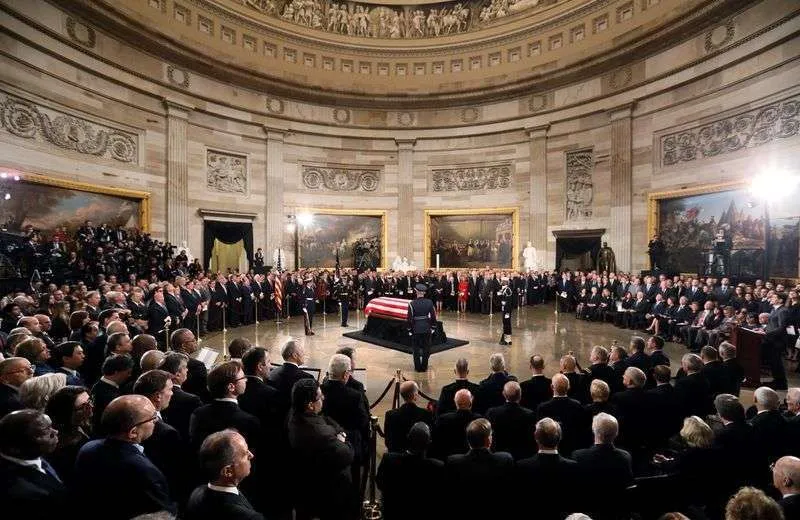
Statuary Hall
After leaving the Rotunda, we were led to the National Statuary Hall. One of the most popular rooms in the Capitol displays sculptures of prominent Americans.
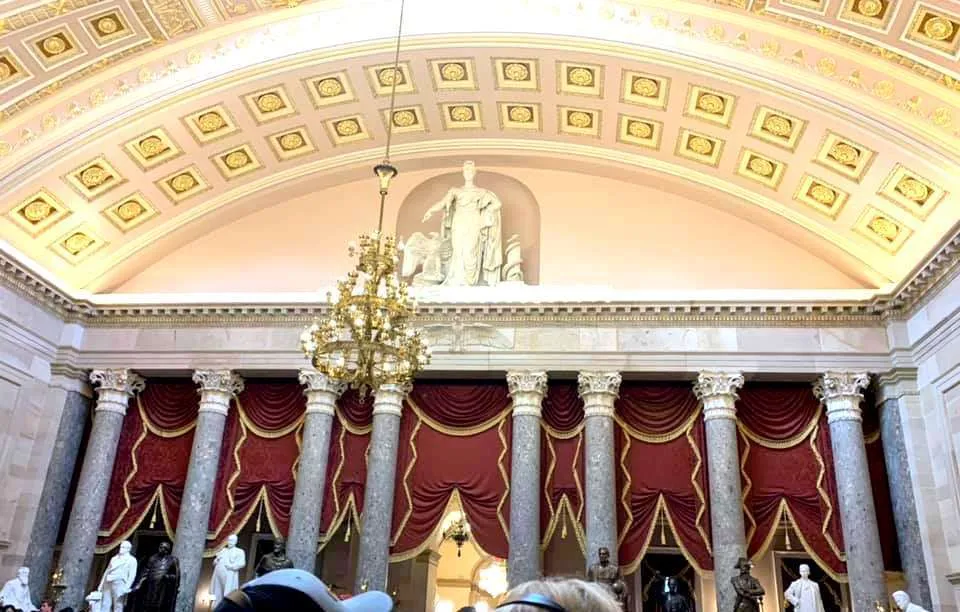
Once called the Hall of the House, for nearly 50 years, this semi-circular room was the meeting place for the U.S. House of Representatives. However, the terrible echoing acoustics, courtesy of the curved ceilings, made conducting business with a group of people nearly impossible. After the House moved to a new meeting place, this room became an art gallery.

Congress invited each state to contribute 2 statues of their most prominent citizens for permanent display in the hall. Since the room can’t hold all of the statues at once, they are placed in other areas of the Capitol Building (such as the Rotunda). Currently, there are 38 statues in the National Statuary Hall.

Crypt
After looking around the Statuary Hall, our tour guide led us down to the Crypt. On the first floor of the Capitol Building, 40 columns and beautiful arches support the floor of the Rotunda above it. The Crypt is an architectural work of art!
The star in the center of the floor denotes the point from which the streets in Washington D.C. are laid out and numbered. There are also 13 statues from the Statuary Collection, representing the 13 original colonies on display in the Crypt.
The Crypt is the end of the of the Capitol tour. So, after a quick look around, we handed back the headphones to our tour guide as we exited back to the Visitor Center.

I can honestly say that our tour of the U.S. Capitol Building was not what I expected.
It was so much more! I had no idea that the Capitol housed so many works of American art.
The entire tour took maybe an hour and as I mentioned before, it was completely FREE! The kids didn’t love the tour of the Capitol, but they also didn’t hate it. They even liked that they recognized some of the statues and historical scenes.
I definitely recommend a tour of the U.S. Capitol if you ever get the chance. It’s worth it!
You can see more of our family adventures in Washington here:
- Seeing the Cherry Blossoms in Washington D.C
- 3 Curious Facts About Our National Zoo
- Somebody Should Have Told Us These 5 Things BEFORE Our Trip to Washington D.C
- 3 Crucial Tips for Visiting Our Nation’s Capital
- Arlington National Cemetery: A Bucket List
- How to Find Kilroy at the WWII Memorial in Washington D.C
